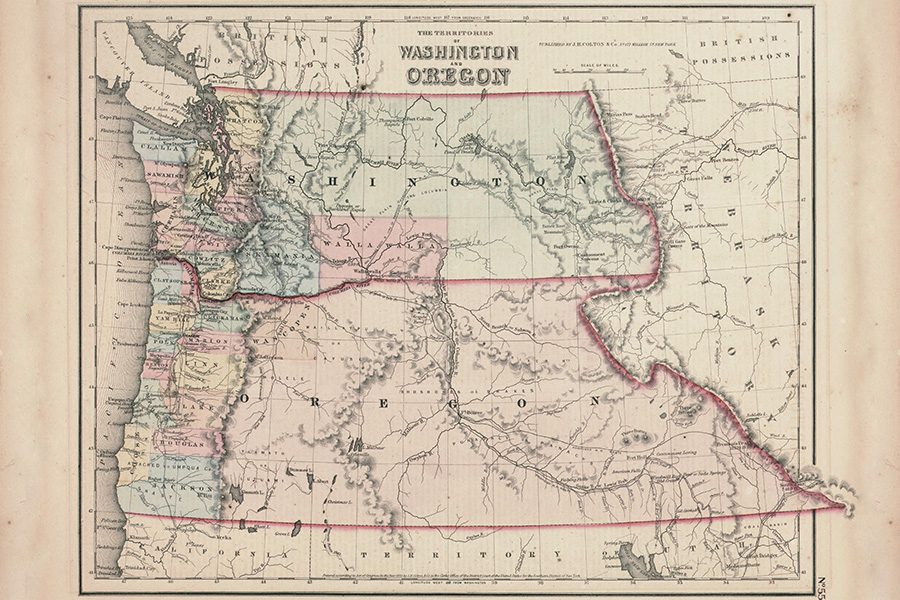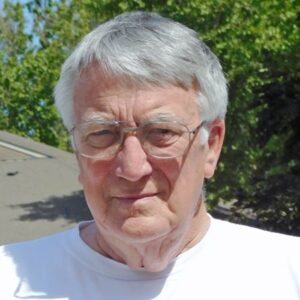
Home » From Columbia to Washington, here’s our state’s origin story
From Columbia to Washington, here’s our state’s origin story

This J. H. Colton & Co. map from 1853 shows Oregon and Washington territories, with counties, mountain ranges and other features marked.
Courtesy Washington State Archives, Digital ArchivesNovember 5, 2024
If not for a Tennessee congressman, Tri-Cities, Washington, today likely would answer to Tri-Cities, Columbia, as in the state of Columbia, not the state of Washington.
State legislators would convene in the state capital – Olympia, Columbia, not Olympia, Washington.
The state of Washington celebrates its 135th birthday on Nov. 11.
More than 170 years ago, people living in the land stretching from the Columbia River to today’s Canadian border and from the Pacific Ocean to the Rocky Mountains were part of the mammoth Oregon Territory. The area was so large its settlers wanted to carve out a new and smaller territory for themselves.
Territory split
A series of meetings in 1851 and 1852, known as the Monticello Convention, with one held at what is now Longview, Washington, led delegates to petition Congress to create a new and separate territory, split from the Oregon Territory by the Columbia River.
Commemorating the Monticello Convention site today is a small park in Longview. The convention name came from Monticello, a community in the area that was destroyed by flooding in 1867.
A bill to establish the new Territory of Columbia was taken up by the Committee on Territories in the U.S. House of Representatives and many months of campaigning, debate and discussion followed.
A representative from Tennessee, Richard H. Stanton, proposed the renaming that three decades later led to creation of Washington state.
Confusing names
Stanton proposed changing the name from Territory of Columbia to Washington Territory, honoring the nation’s first president, and avoiding what could be confusion with the nation’s capital, Washington, D.C. (District of Columbia).
His proposal was not without its opponents. A Maryland representative, Alexander Evans, noted “multiple counties, cities and towns were named such (Washington) and so could be the source of confusion itself.” Most Washingtonians know this still can be confusing today.
Evans suggested giving the territory “some beautiful Indian name.”
Residents about to be affected by the naming had mixed views, but generally supported the name change.
Stanton won out among the two men’s colleagues in Congress, and “Columbia” was changed to “Washington.”
Known as the Organic Act of 1853, President Millard Fillmore signed into law the creation of the Washington Territory on March 2, 1853, two days before he left office.
Its territorial Republican-form of government included executive, legislative and judicial branches overseeing a territory including “all of the land west of the Rocky Mountains, north of the Columbia River, and south of British possessions.”
The Oregon Treaty of 1846 had set the boundary there between the United States and land of the United Kingdom at the 49th Parallel.
The next president, Franklin Pierce, appointed his friend, Isaac Stevens, the new territorial governor. Stevens picked Olympia as territorial capital.
Isaac Stevens Middle School in Pasco and other places in Washington state are named for him.
Too large?
When Oregon became a state in 1859, Washington Territory picked up even more land that had been part of the Oregon Territory but which was separated with creation of Oregon as a state.
Some considered the territory too large for statehood, with its eastern boundary the Rocky Mountains and parts of what today are Idaho, Montana and Wyoming, and the western boundary the Pacific Ocean.
When Idaho’s territorial boundaries were established in 1863, Washington’s current eastern boundary fell into place.
From July 4 to Aug. 22, 1889, a constitutional convention was held in Olympia. The new constitution was approved by territorial voters on Oct. 1, and signed by Washington Territorial Gov. Miles Conway Moore. Congress approved the constitution as required before a state is established and voted Washington into statehood.
President Benjamin Harrison signed the proclamation on Nov. 11, 1889, giving birth to the nation’s 42nd state, which is the 18th largest at 71,362 square miles.
Gale Metcalf of Kennewick is a lifelong Tri-Citian, retired Tri-City Herald employee and volunteer for the East Benton County Historical Museum. He writes the monthly history column.
Senior Times
KEYWORDS November 2024
Related Articles
Related Products




